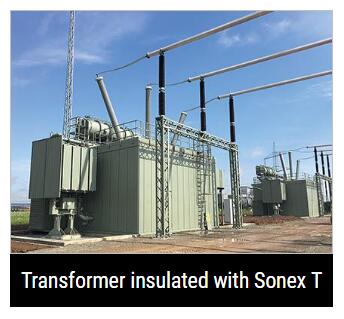Welcome to Sino Bearings web
24x7 HOTLINE:+86-28-81454188

 NEWS
NEWS
Transformer substations are getting bigger and more powerful, but they aren’t supposed to be getting noisier. This calls for innovative cladding for transformers, says Kai Brochhagen
The EU is demanding the expansion of renewable energy sources for generating electricity. This is resulting in increasingly closer links between European power supply networks, which is radically changing the structure of energy supplies. Until now, coal-fired, gas and nuclear power plants, along with transformer substations, have largely been built near large centres of consumption. However, wind turbines and photovoltaic plants are being established where they can generate the most energy. The resulting decentralisation of energy generation requires a new “grid architecture”.
Old and new transformer substations working together
To ensure Europe can continue to rely on energy supplies from wind power (primarily from the windy northern coastal regions) and solar power (primarily from southern Europe or North Africa), thousands of kilometres of new ultra-high voltage cables need to be laid and existing routes reinforced or replaced. The energy generated needs to be converted to a higher voltage level for transport to centres of consumption. With this in mind, new transformer substations are being built and existing plants are being fitted with more powerful transformers.
These new circumstances pose special challenges when it comes to noise control. The noise immissions of the new and “upgraded” transformer stations must not exceed those of the existing plants, even though they are larger and more powerful. The strictest limits apply near residential areas – particularly at night. The typical tonal humming or murmuring of a transformer station originates in the transformer, and mainly in its core. The low-frequency noise is more difficult to absorb than higher frequencies from other sources such as pumps and cooling fans. The tonal noise is clearly audible even when there is loud background noise and would be a major problem for the area surrounding transformers without adequate sound absorption. Although sounds caused by fans, pumps and vibrations in the tank walls contribute to overall noise immissions from transformers, it is nevertheless the low frequencies that are the greatest source of environmental noise.
Sonex T, developed by G+H Noise Control, is a system that considerably cuts the noise immissions of transformers (<60Hz). G+H’s Vibrafoam, Vibradyn and Mafund insulating systems play a key role in this. All products are extremely weather-resistant and lower the transmission of vibrations and structure-borne noise. They achieve insertion losses (IL) of between 3 and 14dB.
Practical benefits of SonexT
Besides its noise control features, the SonexT system also offers a range of practical benefits. For instance, the complete plant becomes more compact. Where the standard distance between a transformer and its housing was previously up to 3m, Sonex T cuts this to around 50cm, saving materials and costs. G+H Noise Control has also developed shorter silencers for transformer ventilation systems. They are now only 1.5m long instead of the previous 3m. The control cabinets are no longer installed inside the housing. Instead, they are fitted outside of it, thus making them easier to access than before. The housings are fitted with inspection openings for maintenance and repair work. The roof of the housing is fully accessible, making it easier to work safely.
The compact design also makes transport easier – transformers are transported to their destination complete with housings on a railway wagon or flatbed truck. A further advantage is that measurements to check whether the housing complies with the noise control requirements can be performed around the fully pre-assembled transformer while it is still in the factory – and not left until after the complete construction of a transformer plant, as in the past.
Use of aluminium instead of sheet steel in transformer substation cladding
G+H Noise Control has recently started using aluminium instead of galvanised steel for its transformer housings. The aim is to bring the service life of a housing into line with that of a transformer (around 30 to 50 years). Unlike aluminium, galvanised steel is susceptible to corrosion. Previously, housings needed to be replaced after about 20 years. Aluminium is also resistant to seawater – a major advantage for transformer stations near the coast. However, given that transformers need to be replaced from time to time due to repairs, for example, even those in inland areas should be cladded with aluminium. This makes it possible to move them easily to another location with different conditions as appropriate.
Sonex T is a modular system. As a result, elements can be attached directly to transformers or assembled to form noise control housings or screening walls. When it comes to the walls and roofs of noise control housings, the elements are installed in a frame structure comprising I beams and pipes. Any transformer replacement can be completed quickly by removing a wall from the noise control housing. The transformer to be replaced is simply taken out, a new one is inserted and the wall is resealed. A stable frame structure is also created to hold the Sonex T elements when building screening walls, too. This enables users to insulate not just transformers but entire transformer stations. Here, too, the elements’ straightforward dismantling and reassembly options make it easier to replace transformers.